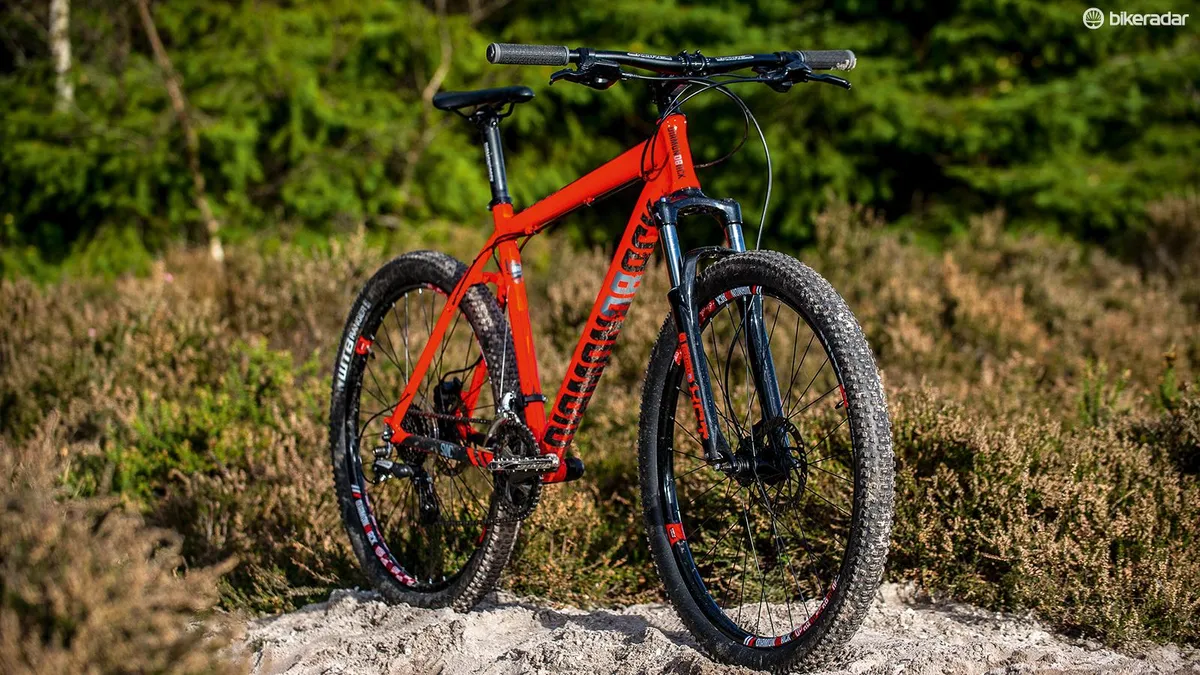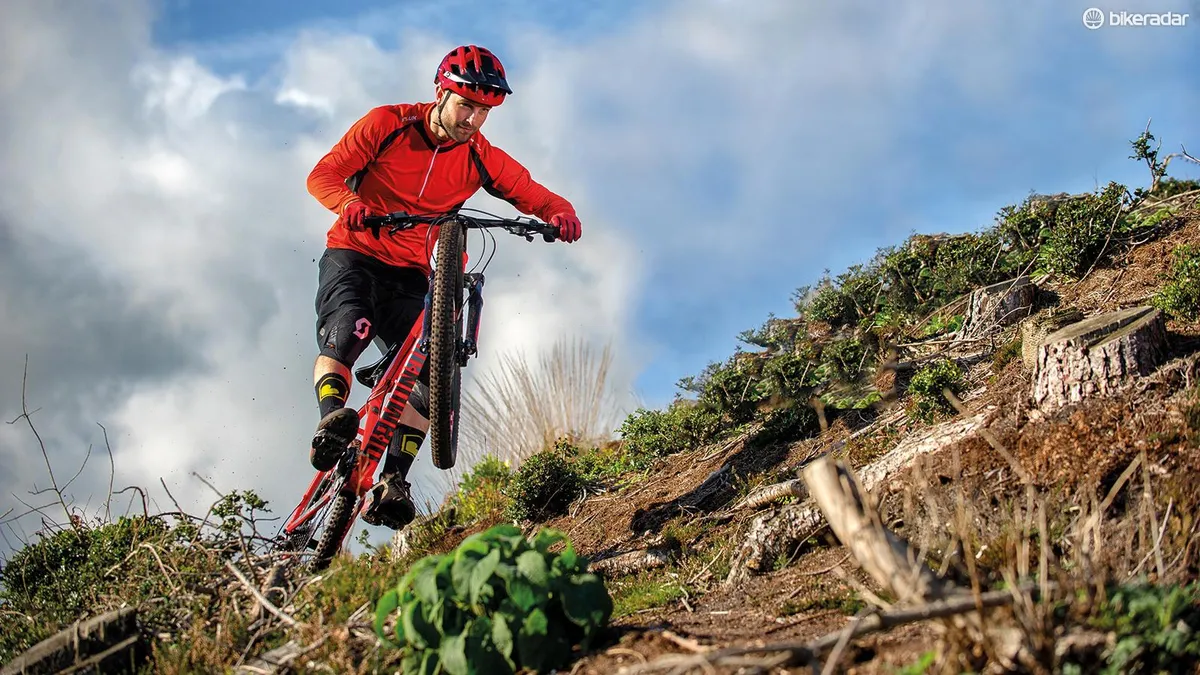Diamondback has some great bikes in the £500 to £1,000 price bracket, and the Sync 3.0 has some useful utility features. Unfortunately, its geometry and suspension limit its off-road potential.
Diamondback Sync 3.0 frame and kit
If you’re looking for a bike that’ll take you to work all week and then take you off-road at the weekend, then the Sync is well equipped.
Not only does it have fixtures for a four-point rear rack, but there are also mudguard mounts on the reinforcing bridges between the rear stays. The shaped aluminium tubing has extra cable guides for a dropper seatpost, in case you want to add one later. As it is, the bolted (rather than quick-release) seat clamp rules out quick, tool-free adjustment of the stock rigid post.

For the price the Sync has some downgrades, most obviously, the Shimano Altus transmission only has an eight-speed rear cassette, while the Tourney crankset is from Shimano’s ‘trekking’ rather than ‘trail’ range and has non-replaceable steel chainrings.
The SR Suntour XCT fork uses a coil spring and has no rebound adjuster to control how fast it bounces back after an impact. It also has 28mm stanchions (upper legs), which limits front-disc rotor size to 160mm. You still get hydraulic rather than cable brakes though, which can feel numb and low on power.
Diamondback Sync 3.0 ride
What first stands out about the Diamondback isn’t its parts but its ride position. To be fair, a 430mm reach (the horizontal distance from the centre of the bottom bracket to the centre of the top of the head tube) teamed with a 90mm stem would have been normal on a size-Large bike a decade ago. The 70-degree head angle wouldn’t have seemed odd either. But by today’s standards the geometry is dated, and the difference in control is obvious.
The Sync just isn’t as stable or as capable of holding a line in slippery conditions, and the long stem means it’s harder to catch the front tyre if it slips or reposition it if your line needs tweaking. In short, you feel remote and removed from control rather than ready to get stuck in.
The skinny fork legs affect accuracy too, bending backwards under braking and over rocks, roots or steps — and, in the process, choking the suspension stroke to a thumping standstill. Without any effective rebound damping, there’s nothing to stop the fork twanging back up with clanking force after big compressions too.

Narrow tyres (53mm) and stiff 36-spoke wheels do nothing to soften the stiff feel of the alloy frame, so there’s no respite from rougher sections. This meant the Sync ran out of smoothness and speed as soon as I headed into tougher terrain. It wasn’t long before the unclamped grips started slipping round the bar too, but at least that’s easy to solve (with a squirt of hairspray).
On the bright side, the extra spokes mean the wheels should take a walloping, and the low-tread WTB Ranger tyres combine easy speed with enough grip for occasional off-roading. The frame stiffness and smaller wheels help acceleration too, so the Sync felt relatively lively.
I’d recommend saving up for a bit longer to stretch your budget further up the Diamondback range if you want a proper mountain-ready bike.


